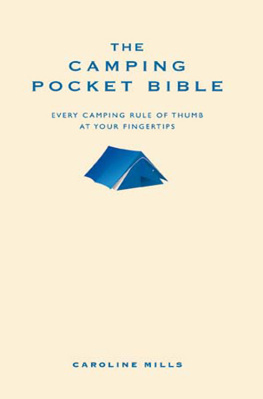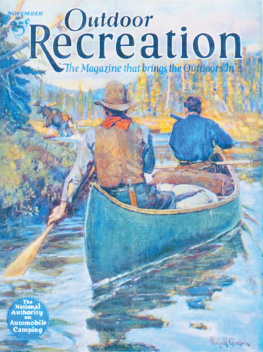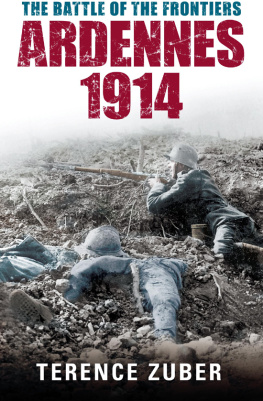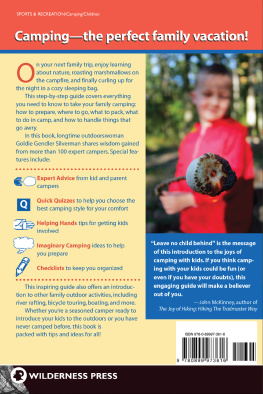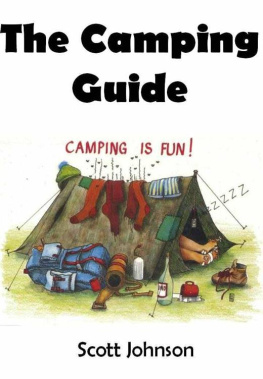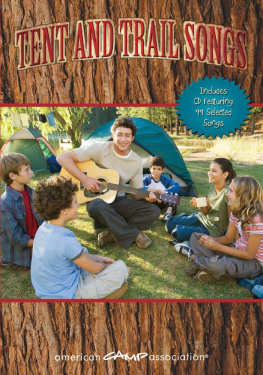ACKNOWLEDGMENTS
To write a book an author needs much support and incurs many obligations. Near the outset of this endeavor, the Smithsonian Institutions National Museum of American History provided a one-year fellowship. I am indebted to this marvelous organization for its backing; to Cheney Moss, Jennifer Loux, and Richard Wicka, who acted as my interns at the time; to Roger White, who generously shared his thoughts with me; and to Jeffrey Stine especially for his support and leadership from the beginning. Before anyone, including me, Jeffrey saw that camping might have more to do with heading out of a city than into nature. His insight transformed my research. I am also grateful to the Huntington Library, Art Collections, and Botanical Gardens for providing two fellowships, and especially to Robert C. Ritchie for his continuing support and encouragement. Moreover, I benefited from grants provided by the Adirondack Museums Warder and Julia Cadbury Travel-to-Collections program, by the Benson Ford Research Centers Clark Travel-to-Collections program, and by Cal Poly Pomonas Research, Scholarship, and Creative Activities program, the Center for Professional Development, and the John T. Lyle Center for Regenerative Studies.
As critical as funding to any historical project is the knowledge and assistance of the librarians, archivists, curators, and institutional historians who collect, organize, and preserve the documents, maps, and other materials necessary to reveal our past. Over the course of two decades I have benefited from the hard work of many, including Joseph Schwartz, Ann Cummings, David A. Langbart, Paul Wormser, and John Hedger of the U.S. National Archives; Barry Mackintosh, Dwight Pitcaithley, Reed Engle, Ward Eldridge, William Tweed, Thomas A. Durant, David Nathanson, Nancy Flanagan, and Wade Myers of the U.S. National Park Service; Linda Lux of the U.S. Forest Service; Jerrold Pepper, Hallie Bond, Jim Meehan, Angela Snye, and Caroline M. Welsh of the Adirondack Museum; Jeff Flannery and Patrick Kerwin of the Library of Congress, Manuscripts Division; Karren Elsbernd and Michelle Wellck of the California Academy of Sciences; Ann T. Walden and Laura Nicholson of the Coleman Company; Elijah Carder and Jini Keasling of the Airstream Company; Cathy Hunter of the National Geographic Society; Judith E. Endelman and Linda Skolarus of the Benson Ford Research Center; Cheryl Oakes of the Forest History Society; John Gerber of the Appalachian Mountain Club; Claudia Jensen of the Denver Public Library; and most especially, Peter Blodgett of the Huntington Library. On more occasions than I can possibly recall, Peter provided suggestions, insights, assistance, and friendship.
Many friends and supportive colleagues have also provided feedback, shared materials, and offered technical assistance. Among them are Warder F. Cadbury, Mark Cioc, Craig Colten, Lary Dilsaver, Janet Fireman, Ron Foresta, Martin Hogue, Linda McClelland, Joe Peplinski, Miles Richardson, Judy Scales-Trent and her mother Viola Scales Trent, Dale Schwamborn, Peggy Shaffer, Mark Stoll, Bill Wyckoff, and Yolonda Youngs. Phil Terrie was especially helpful with his critical feedback and guidance as the manuscript neared completion. Jonathan Cobb deserves special recognition for his early and invaluable suggestion that I organize each chapter around an individual or two in order to humanize the overall story. I believe the result to be a far more engaging tale of American life. Versions of chapters 4 and 5 appeared previously in the journals George Wright Forum and Environmental History respectively. The editors and reviewers of those earlier efforts greatly improved this book.
Michael McGandy has been an outstanding editor, at once both supportive and insightfully critical. Similar services have been provided by other members of the Cornell University Press staff, especially Karen Hwa, Susan Barnett, and Bethany Wasik. Together this team has been organized, responsive, and consistently professional. Its been a true pleasure to work with them. A related professional, Bill Nelson, produced the maps without hesitation and in a timely fashion.
Finally, I thank my parents, who taught me to camp, my sisters and brother, and my friends, especially Tony Cruz, Izzy Schwartz, Greg Story, and Gary Woods, whose steady queries about the book kept me pressing forward. You will never know how much your interest and curiosity led directly to a successful outcome. In the same vein, Kitty Connolly has my utmost affection for her steadfast support and patience, her frequent and thoughtful comments, and her mutual pleasure in camping. This book is a reality because of you.
To everyone above and to the many more who were helpful at a moment when I needed bracing, I am deeply grateful.
INTRODUCTION
ROUGHING IT SMOOTHLY
We had been looking forward to this camping trip for more than a month and were now comfortably settled into our favorite campsite. Kitty and I discovered this eastern Sierra Nevada idyll in our usual fashion. We pored through the older camping guides on our bookshelves and explored the Internet for suggestions. Finally settling on a general area near Bridgeport, California, we drove for seven hours and then spent several more exploring the forests rather remote camping areas before choosing one. The site appealed to us because it was spacious, isolated, and adjacent to a lovely gallery of trees and a mountain stream that was home to beavers. Nearby sprawled a meadow that stretched away toward the towering mountains. Nothing in our everyday world compared to this attractive scene. We felt as though we were, like some earlier Americans, roughing it in a picturesque, quiet, fragrant, and untamed wilderness. At the same time, though, we also enjoyed this campsite because it was accessible by car.
We take pleasure in car camping and have enjoyed many satisfying camping trips in state parks, national parks, and national forests. Unlike the majority of car campers, however, we prefer primitive areas over developed ones, and this Sierra Nevada site became our favorite because it is an attractive blend of roughing it and comfort. Our ideal camping area is on public land without designated campsites, fire pits, tables, potable water on tap, toilets (flush or earthen), or trash services. Instead, we enjoy having to manage these challenges ourselves. Yes, we have to dig our own toilet, but since we are car camping, we can also surround ourselves with a variety of conveniences. We have an easily assembled two-person tent, sleeping pads, and sleeping bags; all are quite light and can be packed into small spaces. These particular items are part of our households camping kit because they can do double duty: when we are feeling more adventurous and head out on the occasional backpacking trip, they also come along. Nearby stands our aluminum folding table plus two five-gallon water containers and a steel ice chest for storing perishable items. We have the usual assortment of (somewhat) mismatched cooking and eating utensils, including pots and pans, cups, plates, bowls, and can opener. On the table we have a two-burner, white-gasoline pressure stove that allows us to begin cooking a meal in less than a minute. With just a small amount of hand pumping, this century-old technology comes to life every time. The longer we own it, the more impressed I am by its reliability. Close at hand sits the most memorable piece of our geara 1948 Coleman white-gasoline pressure lantern that I inherited from my parents, who were avid campers. Coming up on its seventieth birthday, this antique continues to light the darkness whenever we wish to read, play cards, or engage in some other game in the evening. Although it is too cumbersome and heavy for backpacking, I am attached to it and continue to be impressed by its light-producing capacity. As a part of our campsite building ritual, we assembled a few rocks into a makeshift fire ring and have placed our firewood, purchased in nearby Bridgeport, nearby.



